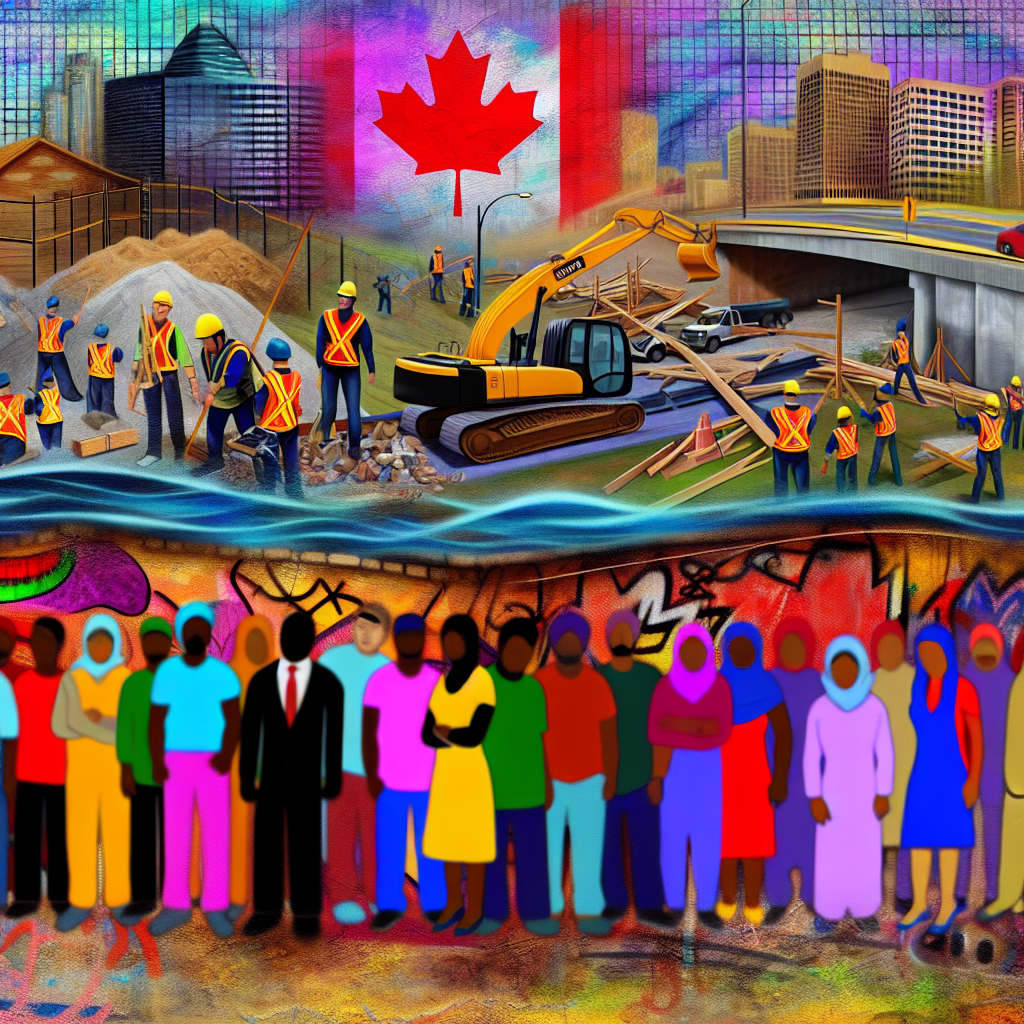Introduction
Canada has experienced a significant increase in immigration in recent years, leading to various infrastructure challenges. As the population grows, it becomes crucial to address the needs of newcomers and ensure that the country’s infrastructure can support the influx of people. This article will explore strategies and solutions to keep up with infrastructure challenges as immigration peaks in Canada.
The Impact of Immigration on Infrastructure
Immigration plays a vital role in Canada’s economic growth and cultural diversity. However, the rapid increase in immigration can put a strain on existing infrastructure, including transportation, housing, healthcare, and education systems. It is essential to proactively address these challenges to maintain a high quality of life for both newcomers and existing residents.
Transportation
As more people settle in Canada, transportation networks face increased pressure. Congestion on roads and public transportation systems can lead to longer commute times and reduced efficiency. To keep up with infrastructure challenges, the following measures can be implemented:
- Investing in public transportation expansion and improvement projects
- Developing efficient transportation systems in urban areas
- Promoting alternative modes of transportation, such as cycling and walking
Housing
The demand for housing rises as immigration peaks, leading to increased competition and rising prices. To address this challenge, the following strategies can be adopted:
- Increasing the supply of affordable housing through government initiatives
- Encouraging the construction of new housing developments
- Implementing policies to prevent housing speculation and ensure fair access to housing
Healthcare
The healthcare system faces additional pressure as the population grows. To meet the healthcare needs of newcomers and existing residents, the following actions can be taken:
- Investing in healthcare infrastructure, including hospitals and clinics
- Expanding healthcare services in areas with high immigrant populations
- Improving access to primary care and specialized services
Education
As more families immigrate to Canada, the education system must accommodate the growing number of students. To address this challenge, the following strategies can be implemented:
- Building new schools and expanding existing educational facilities
- Providing additional resources and support for English or French language learning
- Offering cultural integration programs to help students adapt to the Canadian education system
Successful Case Studies
Several Canadian cities have successfully managed infrastructure challenges during periods of high immigration. These case studies provide valuable insights into effective strategies:
Case Study 1: Vancouver
Vancouver experienced a significant increase in immigration, particularly from Asia, in the past few decades. To address infrastructure challenges, the city invested in public transportation, including the SkyTrain system, which reduced congestion and improved accessibility. Vancouver also implemented policies to encourage the construction of affordable housing, ensuring that newcomers have access to suitable accommodation.
Case Study 2: Toronto
Toronto has seen a substantial increase in immigration, making it one of the most diverse cities in the world. To keep up with infrastructure demands, the city has invested in expanding its public transportation network, including the construction of new subway lines. Toronto has also implemented initiatives to support affordable housing and improve access to healthcare and education services for newcomers.
Conclusion
As immigration peaks in Canada, it is crucial to address infrastructure challenges to ensure the well-being and integration of newcomers. By investing in transportation, housing, healthcare, and education, the country can effectively manage the impact of immigration on its infrastructure. Successful case studies from cities like Vancouver and Toronto provide valuable insights into implementing strategies that can accommodate the needs of a growing population. By proactively addressing these challenges, Canada can continue to thrive as a diverse and inclusive nation.

